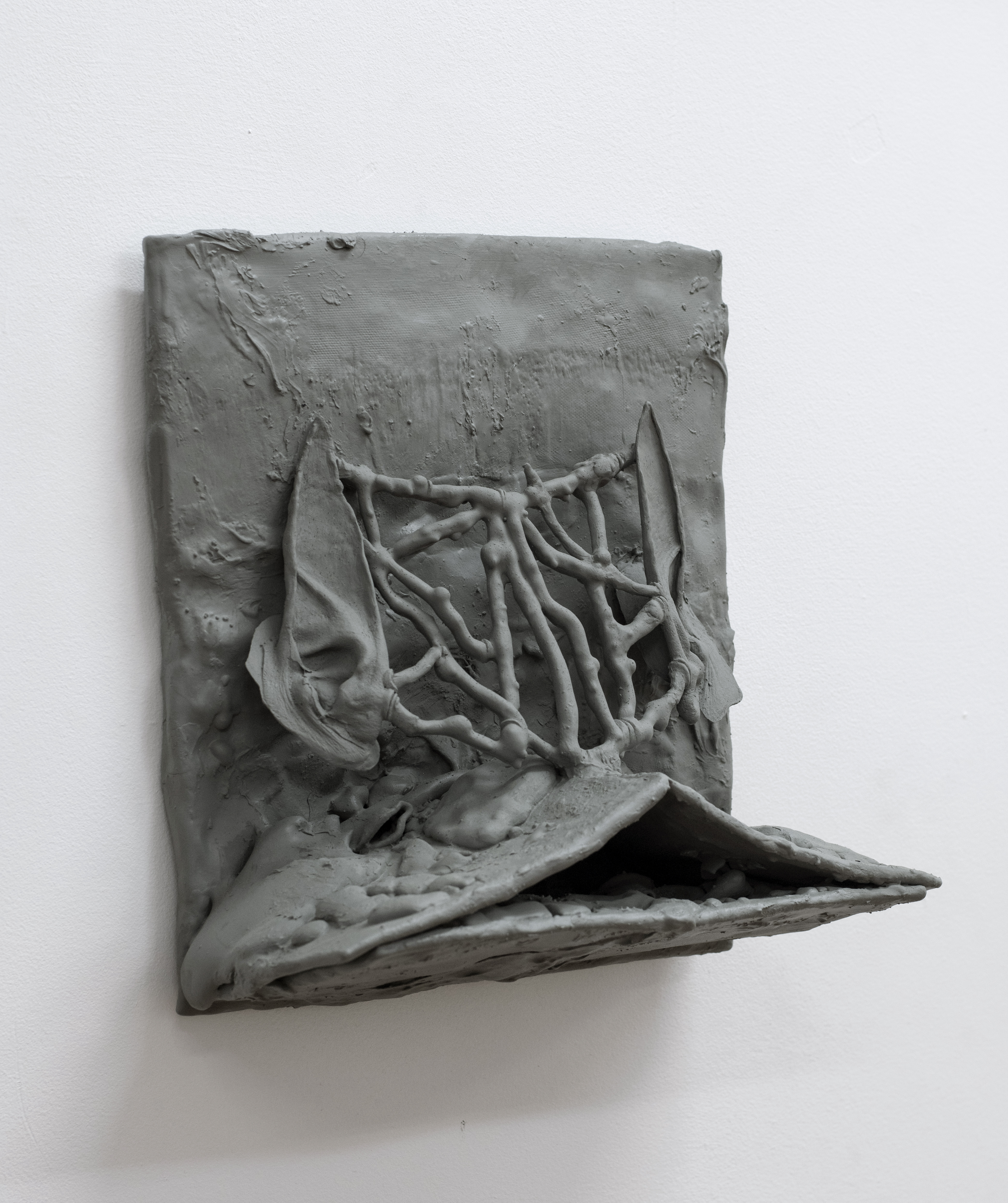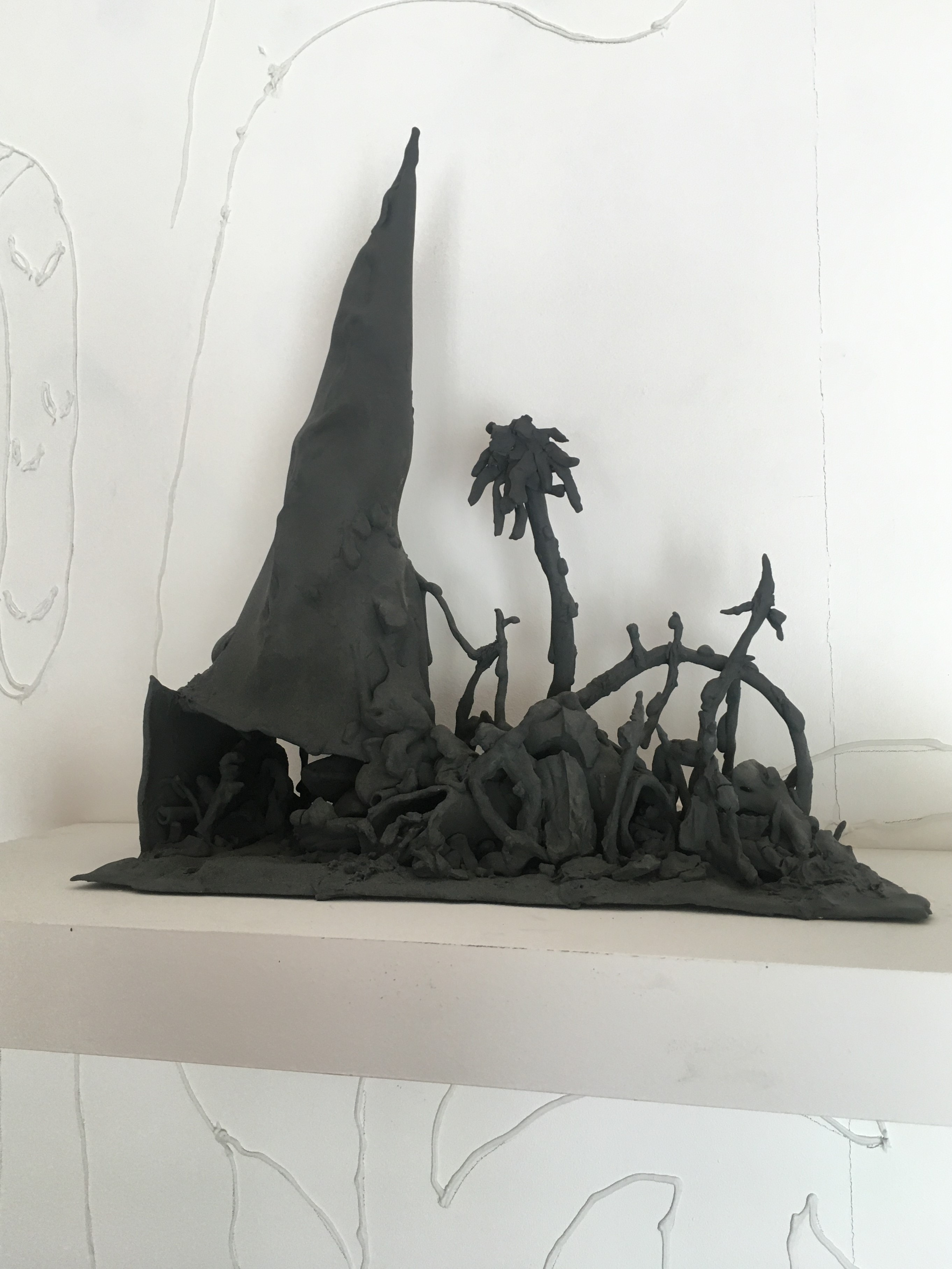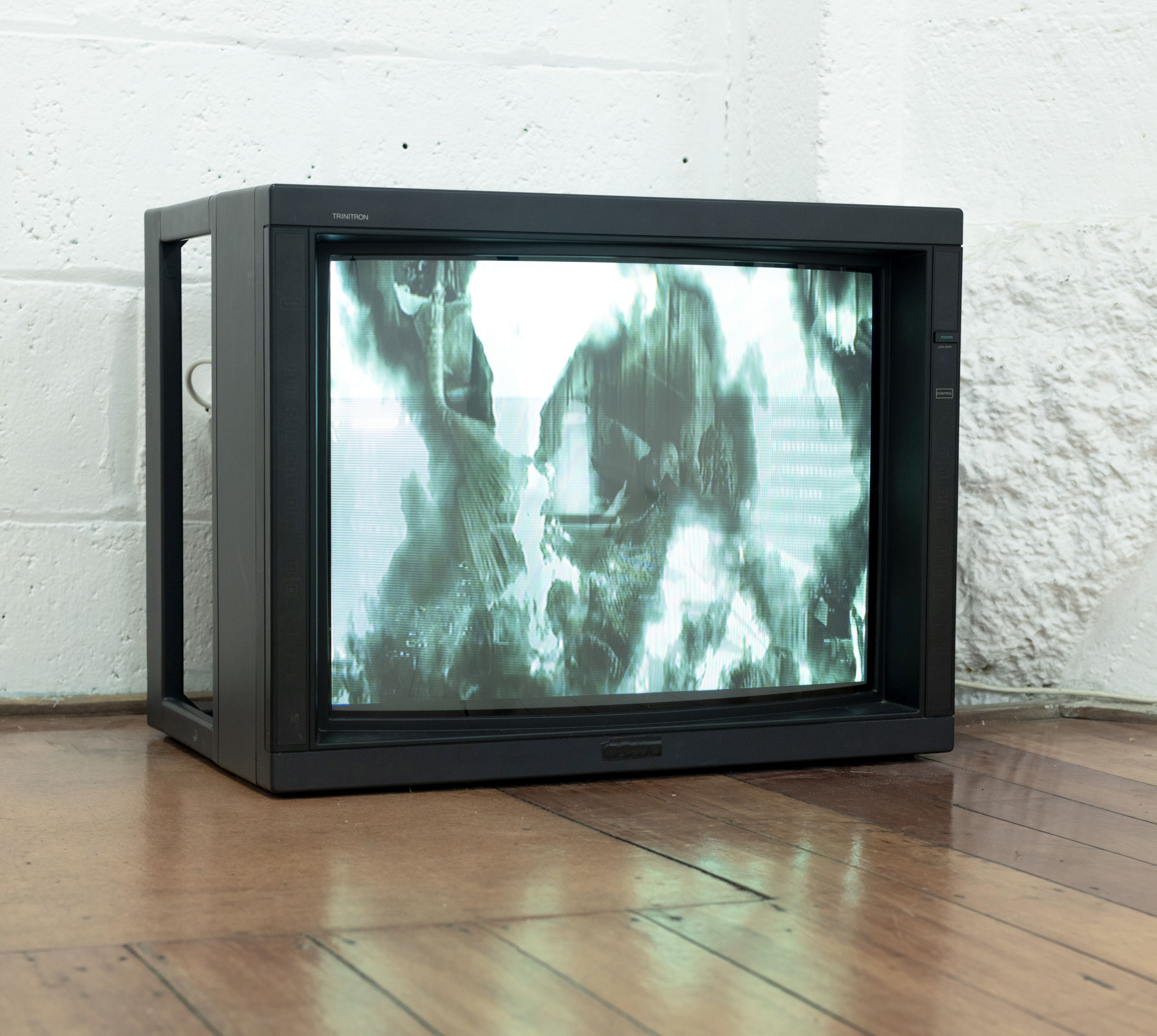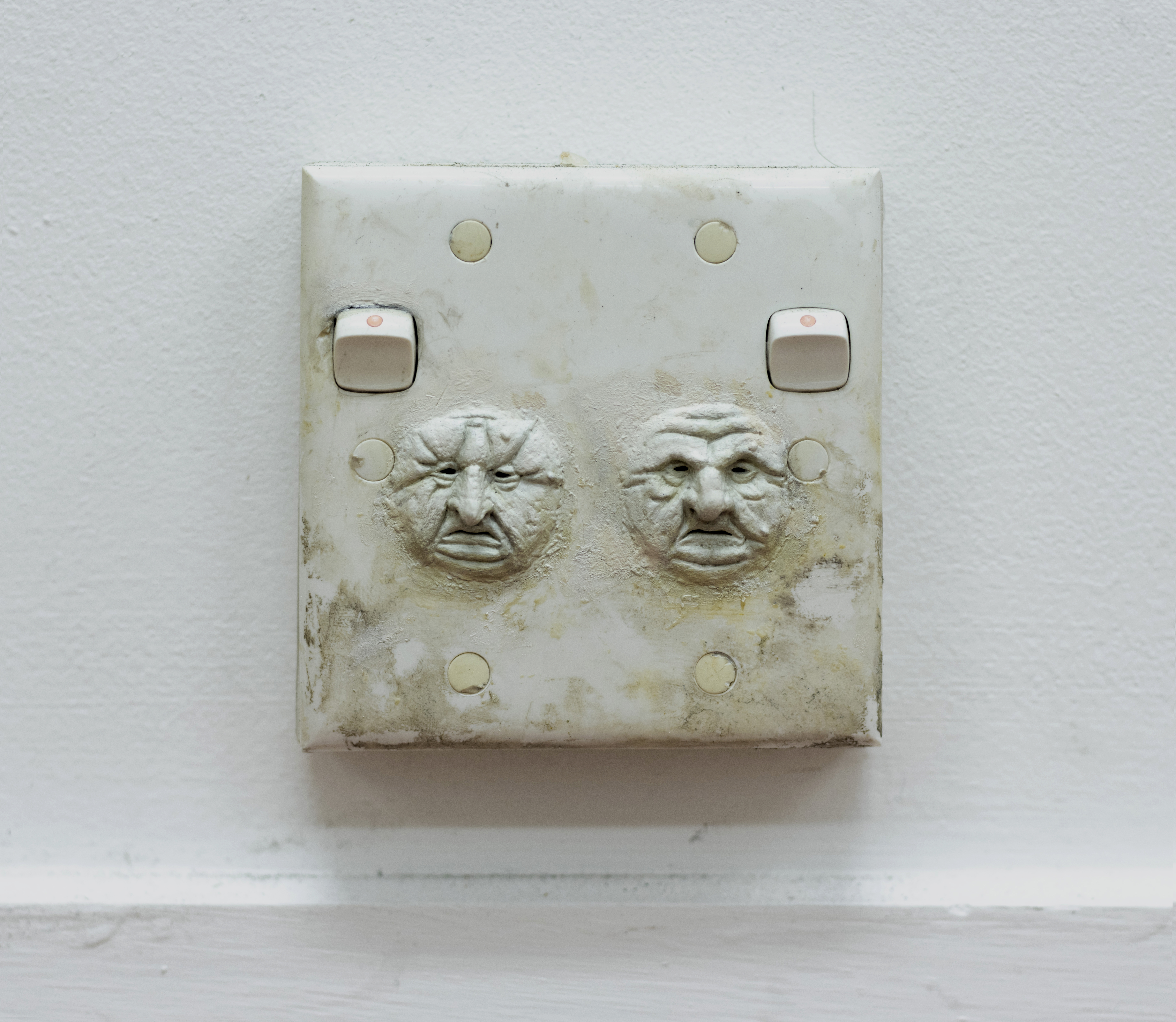Decay Detritus & Decomposition
Brad Logan Heappey





.jpg)
.JPG)

.jpg)
In the opening scene of the 1986 film ‘Blue Velvet’ (dir. David Lynch), white picket fences, cloudless skies and pristine manicured gardens set a scene of peace, tranquillity and security. A middle aged man waters the garden around his home. While doing this, his hose gets caught and tangled, kinking at its middle and cutting of his supply of water. Pressure builds in the twists of the hose. The man, battling to free it, tugs and jerks at it violently, until suddenly, as if struck from an invisible enemy, he clutches his neck in extreme agony and falls to the ground.
During this traumatic change in scene, Bobby Vinton’s song Blue Velvet continues to play uninterrupted, agitating the usual cinematic norms for a scene containing such emergency.
While the man lies helplessly on the ground the focus perplexingly shifts to the lawn itself. As we depart from the man and his afflictions, we move closer and deeper into the grass. The ever enlarging under grove of the lawn starts to take on the appearance of a dark, untamed forest, forgotten by the world. Underneath this dark canopy, the scuttling and loud visceral chewing of giant insects crawl over one another, inches beneath the suffering man.
A symbolic order remedies a world without any inherent meaning. Existential anxieties are eased away by the rationalizations and narratives we apply as we collectively reimagine the world as we’d like to see it.
The complicated, mysterious and chaotic therefore become disregarded or reconceptualised in a way which holds meaning. Due to its uncontrollability, the concept of nature falls within this reconceptualization, becoming contained, externalized and exchanged for a subjective shelter of stability and regularity, safe from the “terrifying vistas of reality”. A sense of the real is therefore exchanged for a hyper-reality. The utopian pastoral impulse realised.
Decay, Detritus and Decomposition critically enquires into the mediation done by the self between our constructed symbolic order and our ontological reality. Within this work’s context, the self should be considered as a membrane, negotiating the opposing and interwoven relationships between the two.
These works of sculpture, video and installation all allude to this divide within our psyche, one which holds us apart from our nature as modified, artificial and alienated.
Miniature dwelling-like scenescapes accompany their full scale occupant in a space surrounded by 3D sketches sprawling over the entirety of the walls like manic cave drawings, while a dream-like video work points to an assumed future.


.jpg)